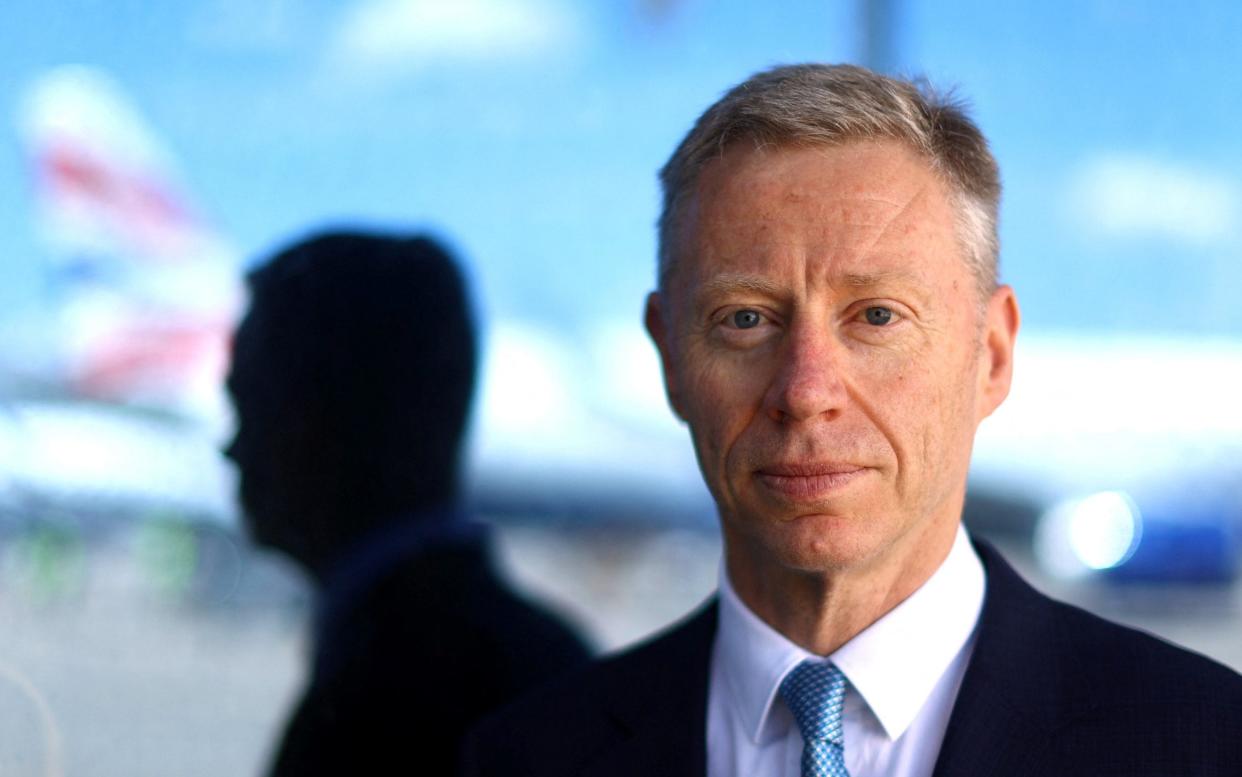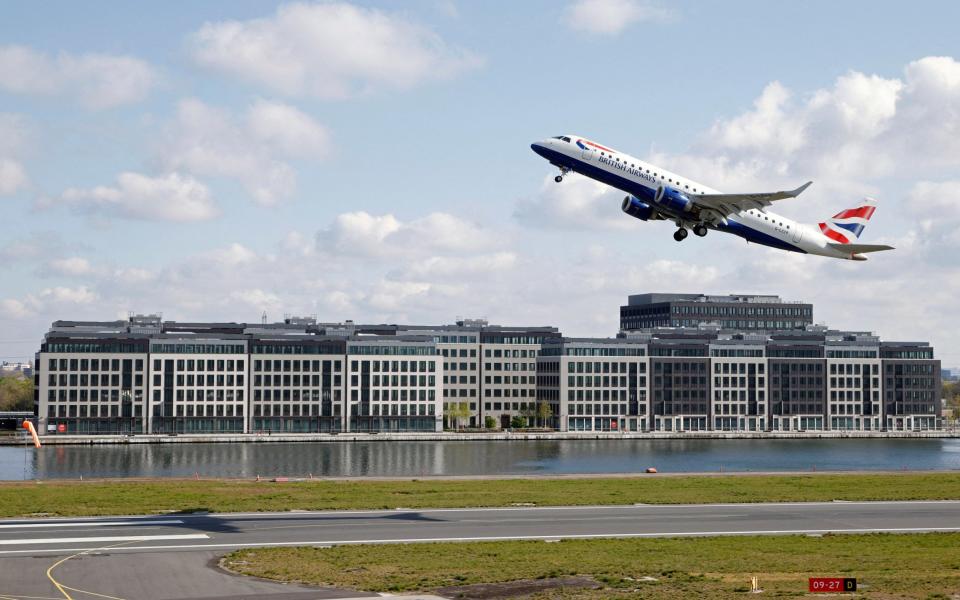How the boss of London City plans to revolutionise airport security

Baggage scanners at departure could soon be consigned to the scrap heap, according to the chief executive of London City Airport.
Robert Sinclair, the New Zealand executive in charge at London City, predicts that technology will let passengers "walk through a security lane carrying a bag behind you, and being scanned as you walk through."
The idea would turn airport security at departure into an experience more like passing through customs than the current arduous ordeal of unpacking bags and emptying pockets as goods are passed through scanners individually.
Nearby O2 entertainment venue, formerly the Millennium Dome, already uses the type of technology Sinclair talks about to screen people as they enter the events hall. Visitors walk through a series of checkpoints developed by Evolv Express to detect weapons on their person using a combination of powerful sensors and artificial intelligence. Crucially, they do not need to empty their pockets.
Sinclair’s comments come as London City trials state-of-the-art baggage scanners on one of its security lanes that mean passengers no longer have to remove liquids, tablets and laptops from their bags.
CT security scanners produce a detailed 3D image of carbon baggage, scrapping the need for laptops, tablets and liquids to be removed and analysed separately. By the middle of next year, every UK airport must have technology installed, rowing back on many of the strict rules that were put in place following the New York terror attacks on Sept 11, 2001.
"Passengers love it. It's the convenience, being able to leave everything, but it's also the speed as well that you can actually get through," he says. "[But] it has taken some time to get to where we are now."
All of London City’s security lanes will be upgraded by Easter, more than a year ahead of the government deadline. If this goes well, the 100ml liquids limit could later be axed.
The benefits to passengers are significant. A trial of both changes at Ireland’s Shannon Airport halved the time passengers spend going through security screening.
“For us, it's just a demonstration... of our focus on speed and convenience, which is our absolute USP at London City,” says Sinclair.

The boosterism comes as Sinclair prepares for a possible battle with Newham Council over plans to expand the operating hours of the central London airport.
The airport suffered a bruising response to a consultation on lifting its annual passenger cap from 6.5 million to 9 million last summer.
Sinclair and his team recut the plans and have put them out to a fresh consultation that will come to a head in the coming weeks.
Sinclair wants to increase the frequency of flights running during the popular morning rush between 6.30am and 7am from six to nine.
In addition, the airport wants to extend Saturday operations, which currently end at 12.30pm, to 6.30pm with an option to extend to 7.30pm during summer months. Sunday flying will remain the same with services beginning at 12.30pm.
The package of changes are intended to entice airlines to bring larger aircrafts to London City, allowing it to welcome more passengers while running the same number of flights.
“We’re asking to make minor changes to our existing conditions,” insists Sinclair. “There's a whole series of things that we're not asking to change.
“We’re not asking to change the number of flights. The number of flights that we can handle in any year is 111,000.
“The key to the future evolution of London City is larger aircraft. So in simple mathematical terms, within the current permitted number of flights, we can handle more passengers.”
Perhaps unsurprisingly, noise campaigners are not convinced.
“Quieter planes are always a good thing,” says John Stewart from HACAN, which calls for better noise control close to airports in the south-east. “But the new planes are not quite what they seem.
“The planes are up to six decibels quieter, but only on departure and only for areas within about four miles from the airport.
“Six decibels is significant and will be noticed by residents.”
Newham Council will be the ultimate arbiter to the airport’s proposals. A spokesman for the council says its strategic development committee will consider London City’s plans once the consultation and planning assessment is completed.
Sinclair and his team are tight-lipped on whether they think they will get the green light or not. But industry sources believe Rokshana Fiaz, the Labour mayor of Newham, will stand in the way of the airport's plans.

Proposals to build a new terminal building on reclaimed land over the Royal Albert Docks were backed by Newham Council under the Fiaz's predecessor only for the then mayor Boris Johnson to reject them as he persisted with his dream of a new airport in the Thames Estuary.
The airport emerged victorious, however, as housing minister Greg Smith backed the plans and Sadiq Khan even quietly dropped his opposition shortly after taking over from Johnson.
London City is also pushing for a Crossrail station at London City one day. Pleas for a stop in the initial development fell on deaf ears - despite the Elizabeth Line burrowing close to the airport’s runway. All the more galling there is a stop at Custom House, next to the ExCel conference centre around a mile away.
“It’s very disappointing,” says Sinclair. “It’s a very significant missed opportunity which we have not lost sight of.
“We understand that it's not going to be something that's going to be developed in the short term, but it is on our long term objectives.
“We've certainly had that discussion with TfL. And they agree that that is a very, very sensible improvement to the Elizabeth line, particularly when you can see just how close it is to our terminal.”
Launching commercial services in 1988, London City is the newest of the “London” airports - but arguably the only one that can lay claim to being in the capital rather than on the outskirts or beyond.
Sinclair says many of his customers use London City in conjunction with other airports, strengthening the case for an Elizabeth Line stop.
“Many, many people are using London City to fly out or fly in and Heathrow to fly in or fly out. In other words, they're connecting in and out of London using both airports.” A 45-minute Elizabeth Line service currently runs directly between Custom House and Heathrow.
“And so there is a real opportunity given that the Elizabeth Line connects to both airports to that cross-London connectivity.”

In common with the rest of the aviation sector, London City was rocked by the pandemic as travel restrictions brought operations to a standstill. Covid made a mockery of long-held investment banker claims that airports were “recession proof”.
Some 908,000 people flowed through the airport during 2020, falling to 721,000 the following year. Prior to the pandemic, London City had welcomed 5.1 million passengers.
In 2022, a year that was still scarred by the omicron variant, 3 million people passed through the terminal.
In the 1990s, London City Airport was close to collapse before Irish billionaire Dermot Desmond stepped in and masterminded a remarkable turnaround.
Desmond, also famed for owning a stake in Manchester United before selling out to the American Glazer family, paid just £23m for London City in 1995. The investment was seen as little more than a long-odds bet for the horse racing enthusiast.
At the time, nearby Canary Wharf had called in receivers and the Docklands area was suffering in the wake of recession.
The punt paid off. Desmond sold the business 11 years later for £750m as the airport established itself as a firm favourite among investment bankers, accountants and lawyers that work in London's Square Mile.
Today it is owned by a collection of overseas pension, infrastructure and sovereign wealth investors, who paid £2bn to acquire the business in 2016 from the private equity house that bought the business from Desmond.

